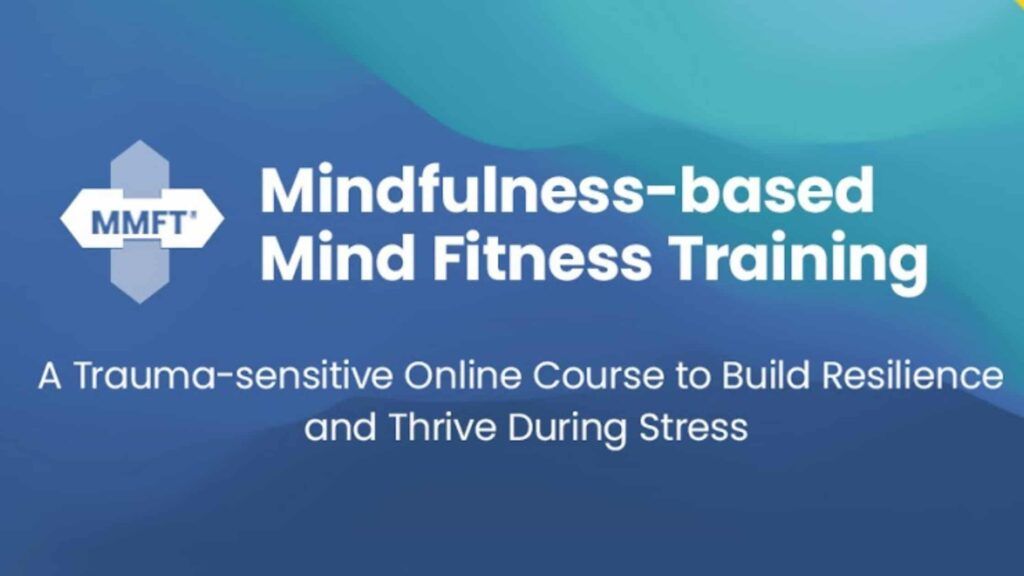How does mindful eating work? Mindful eating is all about focusing your attention on the food you eat and savoring every single bite. It’s not about counting calories or restricting your diet. In fact, it’s the opposite—it’s about building a healthy and positive relationship with your food.
When we talk about mindful eating, we’re talking about bringing mindfulness, a concept often associated with meditation, into your daily meals. Mindfulness here means being present and aware, tuning into your body’s hunger cues, and truly enjoying what you eat. This is less about what you eat and more about how you eat it.
You’ve probably encountered countless diets that promise rapid weight loss and quick fixes. Mindful eating offers something different. It’s not a diet; there’s no timeline or rules on what to eat or what not to eat. You’re encouraged to let go of rigid ‘diet’ rules, and instead, trust yourself to make choices that feel right for your body.
The contrast between mindful eating and dieting is quite stark. While diets often demand control and sacrifice, mindful eating invites you to explore and experience the joy of food. It shifts the focus from limiting intake to appreciating food and making conscious choices based on what your body truly needs.
By understanding the principles of mindful eating, you become more aligned with your body’s unique needs. This approach encourages you to listen to your body, respect hunger cues, and enjoy the process of eating. Mindful eating isn’t a one-size-fits-all solution—it’s a personal journey towards a more peaceful relationship with food.
Mindful Eating is not a Diet

Mindful eating brings a fresh perspective to how we interact with food. It’s far from your typical diet plan, which often imposes strict rules and limitations. Instead, it encourages a broader understanding of body and mind harmony.
Diets often come with a set of do’s and don’ts, creating a sense of restriction and stress. Mindful eating flips the script by inviting you to embrace flexibility and intuition. By moving away from restrictive patterns, we’re allowing ourselves to make food choices that nurture and sustain us, without guilt or anxiety.
Adopting a mindful eating approach means listening to your body’s internal signals, such as hunger and fullness cues, rather than external dietary rules. This method isn’t about adhering to someone else’s plan; it’s about trusting your own inherent wisdom to guide your eating decisions.
The journey towards mindfulness in eating is personal and unique. It fosters a sense of freedom—there are no forbidden foods or stringent schedules to follow. Instead, it empowers you to explore the role food plays in your life, helping you understand why and when you eat and the emotions tied to your habits.
By recognizing that mindful eating is not a diet, you’re opening up to a world where the focus is on balance and personal well-being. This shift in perspective can lead to a healthier, more sustainable relationship with food, as it removes the stigma and emotional baggage often associated with eating.
Recognizing Why We Eat

Eating isn’t just about satisfying hunger; it’s often tied to a complex web of emotions, habits, and social cues. Understanding why we eat can be a powerful step towards mindful eating and healthier relationships with food.
Many of us eat for reasons beyond physical hunger. Emotional triggers like stress, boredom, or even happiness can lead to unnecessary snacking and overeating. Tuning into these triggers helps us identify our unique eating patterns and separate actual hunger from emotional urges.
Social settings play a big role as well. Ever found yourself eating because everyone else is, even when you aren’t hungry? Recognizing these moments is crucial in practicing mindful eating. It’s about being aware of times when you eat out of obligation rather than need.
To identify why we eat, it’s helpful to pause before reaching for a snack or meal. Ask yourself: Am I really hungry, or am I eating because of another reason? This practice of introspection can illuminate unconscious eating habits that may have been formed over time.
Journaling can be a valuable tool in this journey. Tracking your meals and associated feelings can reveal patterns and help guide you in creating a mindful eating practice that’s adaptable and personalized. It’s about embracing the insights and making conscious choices that align with what your body truly needs.
Recognizing Physical Hunger

Deciphering true physical hunger from other cravings is a fundamental part of mindful eating. It’s easy to confuse a desire to eat with actual hunger, especially in a world filled with constant food cues and temptations.
Physical hunger is your body’s natural signal that it needs nourishment. It often comes with physical signs such as a growling stomach, low energy, or a slight headache. These signals are your body’s way of telling you it’s time to refuel.
On the flip side, cravings driven by emotions or external factors might lack these physical indicators. They tend to come on suddenly and often focus on specific ‘comfort foods’. Recognizing this difference can help prevent mindless eating.
Taking a moment to check in with your body before eating can be incredibly helpful. Ask yourself if you’re experiencing any of the physical signs of hunger. If none are present, consider whether you’re eating for another reason.
The goal here isn’t to ignore cravings but to understand them. By distinguishing between true hunger and other types of cravings, you’re taking a step towards making mindful decisions that prioritize your well-being.
Learning to listen to your body and respond appropriately improves not just your physical health but also your relationship with food. It’s about tuning into what your body truly needs and respecting those signals.
Using the Hunger Fullness Scale for Mindful Eating

Learning to gauge how hungry you are is an essential aspect of mindful eating, and the hunger fullness scale can be your best friend here. It’s a useful tool to help you assess and understand your body’s needs more accurately.
The scale typically ranges from one to ten, with one being extremely hungry—like you could eat a horse—and ten being uncomfortably full, where you wish you hadn’t had that last slice of pizza. Ideally, eating when you’re around a three or four and stopping at a six or seven is the sweet spot for aligning with your body’s hunger signals.
Using this scale, try pausing before your meal begins to check in with your hunger level. Are you at a two or maybe closer to a five? Then, reassess halfway through your meal. This practice not only aids in portion control but also prevents you from eating beyond your needs.
By being attentive to your hunger and fullness levels, you can make informed decisions about what and how much to eat, fostering a connection with your body’s signals. It’s like tuning into your body’s internal guide.
Remember, this isn’t about getting it ‘perfect’ every time but about understanding and respecting your hunger and fullness. Over time, this practice can help break the cycle of mindless eating and promote a sense of balance and control. It’s about creating a harmonious relationship with food, where you eat to satisfy hunger, enjoy meals, and avoid discomfort from overeating.
When, What, and How We Eat

Every meal is an opportunity to understand your eating habits and make conscious adjustments. Mindful eating involves being present not just in what you eat, but also when and how you eat it, which can transform your relationship with food.
Think about your eating schedule. Are you eating just because it’s “lunchtime,” or are you truly hungry? Recognizing meal timings driven by routine rather than hunger can help shift how you approach each meal. Finding flexibility in your meal schedule can result in eating when your body actually needs food, instead of when the clock tells you.
The ‘what’ of mindful eating involves paying attention to food choices. Are you opting for foods that fuel you, or are you reaching for convenience or comfort? Bringing awareness to these choices can cultivate a more balanced diet and improve your overall well-being.
Besides timing and choice, consider your eating environment. Are you often on-the-go, grabbing meals at your desk, or distracted by screens? Shifting to a more controlled and focused eating space can lead to better digestion and satisfaction because you’re fully engaged with your meal.
To enhance this experience, try simple exercises like chewing your food thoroughly and setting down utensils between bites. These small changes can make a big difference in how you perceive and enjoy your meals, cultivating a deeper appreciation for food.
Recognizing Head Hunger & Emotional Eating Patterns

Head-hunger is the urge to eat driven by emotions rather than actual physical need. Common sources include stress, boredom, and even happiness, leading to eating habits that don’t necessarily satisfy hunger.
Identifying head-hunger starts with recognizing the situations and feelings that trigger these cravings. Are you more tempted to snack when stressed about work or when you’re home alone with nothing to do? This awareness of your emotional landscape can be a huge help in interpreting your eating habits.
Techniques like mindful breathing or a quick mental check-in can distinguish between emotional and physical hunger. Take a moment to ask yourself what you’re really feeling. Are you truly hungry, or is there an emotion that needs addressing instead?
It’s important to address these emotions directly, perhaps by talking to someone, engaging in a hobby, or practicing relaxation techniques. Understanding that food isn’t the solution to emotional needs can be freeing and leads to healthier coping strategies.
Empowering yourself with the knowledge that emotional eating is something you can manage is key. Over time, developing strategies to handle emotional triggers positively will support your journey towards a more mindful, balanced approach to eating.
Enjoying Every Bite of Foods that Fuel Us

Truly enjoying your food is one of the most rewarding aspects of mindful eating. It’s about savoring what you eat and understanding how these choices support your overall lifestyle.
Start by selecting foods that not only satisfy your taste buds but also nourish your body. Whether it’s a vibrant salad, a hearty soup, or a slice of your favorite pie, choose foods that bring both joy and health benefits.
As you eat, focus on the flavors, textures, and aromas. Allow yourself to relish each bite without rushing or distractions that take away from the experience. This level of attention can transform even a simple meal into a delightful occasion.
To build a food-positive mindset, try cooking something new or experimenting with different cuisines. This not only sparks enjoyment but also broadens your palate with nourishing foods from around the world.
By appreciating each meal and understanding its role in fueling your life, you cultivate a positive relationship with eating. This approach places value on how food energizes and sustains you, motivating thoughtful choices and enhancing your well-being.
Hey there! Hope you found this post useful?
Ready to take your mindfulness journey to the next level? Discover programs that can enhance your practice and boost your overall well-being.





